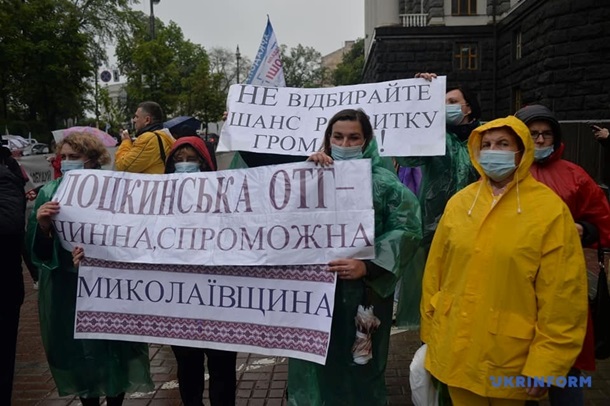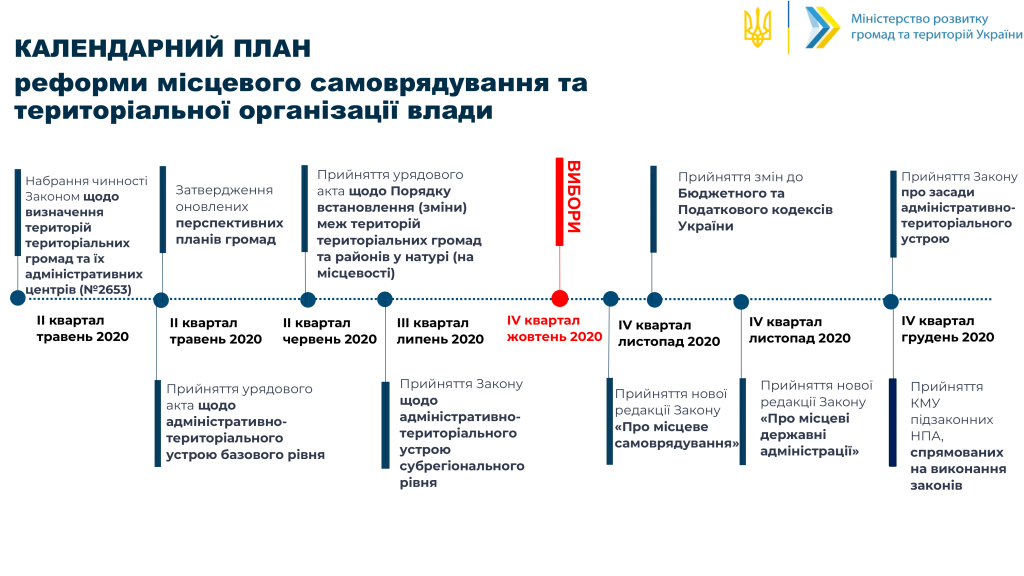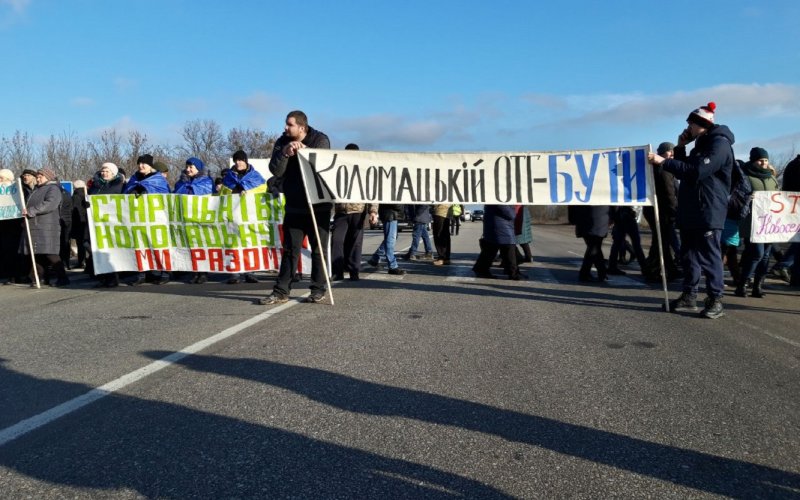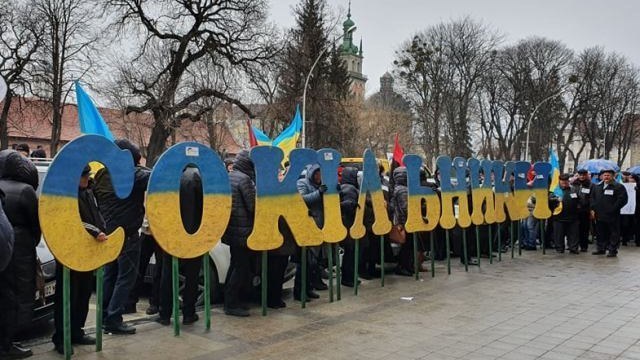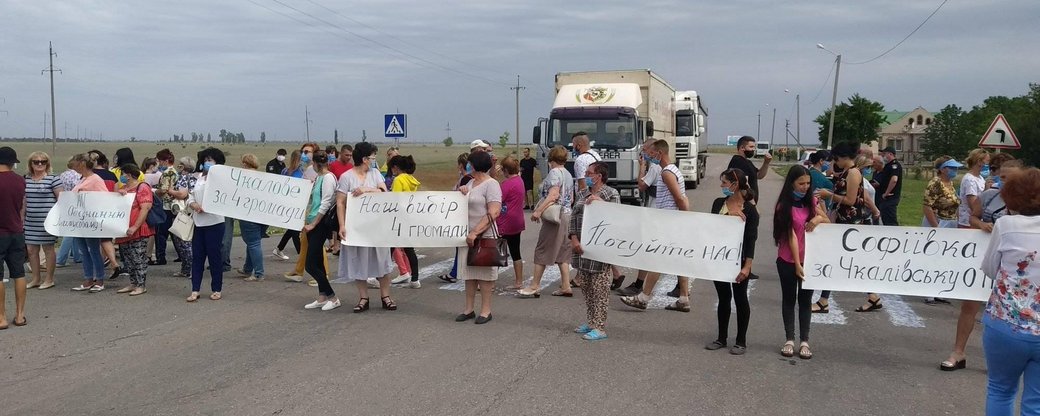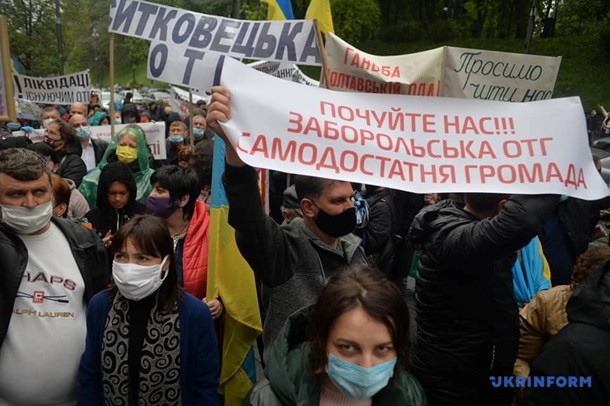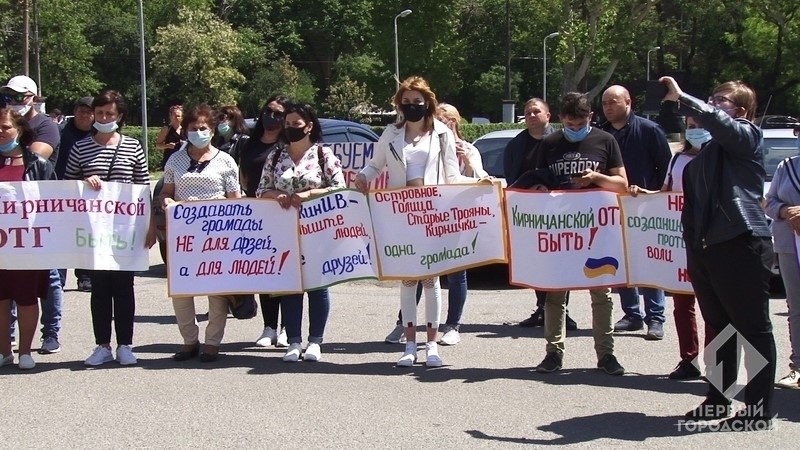In July, the Verkhovna Rada of Ukraine should adopt a decision on holding local elections. In order for such elections to take place local governments and the central government have been actively working for several months on approval of prospective plans for amalgamation of territorial communities and establishment of boundaries of administrative and territorial units. Therefore, the process of amalgamation of territorial communities, which began in 2015, was completed in June 2020.
Let us recall, that on February 5, 2015, the Law of Ukraine “On Voluntary Amalgamation of Territorial Communities” was adopted, according to which neighbouring city, settlement and village councils could form one amalgamated territorial community (hereinafter – ATC) with a single local government. Communities were given the right to amalgamate voluntarily, and those who did not make up their mind were amalgamated by the decision of the Government, which approved the prospective plans of amalgamation of communities for all regions of Ukraine on May 27, 2020. Among the conditions under which it was allowed, in particular, the quality and availability of public services in the ATC, which cannot be lower than before the formation, as well as taking into account historical, natural, ethnic, cultural and other factors affecting the social and economic development of the ATC.
The main stated objective of the reform is the formation of effective local government and territorial organization of authority for an adequate living environment for citizens, the provision of high quality and accessible public services, meeting the interests of citizens in all spheres of life in the respective territory, coordination of interests of the state and territorial communities. After the process of community formation was completed, most of the taxes would remain in the local budget that were previously allocated to the state budget. In addition, all funds received for administrative services should also go to the local budget. It is expected that communities will be interested in establishment of favourable conditions for business on their territory, which will then fill their budgets with taxes.
Representatives of the Government have shifted for several times the deadlines during the year after the end of the process of community amalgamation and completion of the decentralization reform. The profile Deputy Prime Minister at that time Denis Shmyhal stated the following optimistic scenario:
«the first stage of administrative-territorial reform in Ukraine will be completed in 2020. From January 1, 2021, all established ATCs, which will be simply called communities, will switch to direct inter-budgetary relations. On October 25 there will be elections, where all deputies and heads of all approved communities will be elected. On July 25, Central Electoral Commission will announce the beginning of election campaign. By this time, we shall complete all technical and technological things to form the prospective plans of the ATC.»
At the end of May, the Ministry for Communities and Territories Development presented a calendar plan of local government reform, defining the main objective as to approve prospective plans for amalgamation of communities in each region, which was done on May 27. Next stage is the Government’s decision to liquidate old districts and establish new ones. The Government managed to do this until July, while the final approval of districts is after the Verkhovna Rada of Ukraine. However, this plan does not contain a stage for making amendments to the Constitution, which may lead to its changes.
In this paper, we will not assess compliance with the conditions and procedures of voluntary amalgamation of territorial communities, but it is worth to note some amendments in legislation that took place in December 2019 and April 2020 and affected the course of this process.
Therefore, from December 2019 the conditions of voluntary amalgamation of communities have been amended, from now on the amalgamation should be held in accordance with the prospective plans for the formation of territories of communities in the region. They, in turn, must be approved by the Cabinet of Ministers of Ukraine upon submission (proposal) of the relevant regional state administration (hereinafter – RSA). Previously, the prospective plan was approved first by the regional council and then by the Government, the functions of the RSA in this process were more administrative. Requirements (methodology) for development of prospective plans for community formation have also changed which allowed the RSA to redefine the ability of communities and submit proposals to the Government not only to form new communities, but also to dismantle the already established ATCs.
Developers of legislative amendments explained this need by the fact that regional councils did not always make timely and correct decisions to approve prospective plans for community territory formation in the regions, often politicizing this process in order to maintain their influence on potential voters. The developers also noted that as a result of ignoring the criteria for the formation of capable territorial communities, regional councils approved prospective plans for forming community territories, which provided for the possibility of establishing a ATC, which are unable to provide residents with quality and accessible public and other services.
Therefore, since December 2019, the format of community amalgamation was determined by the regional state administrations in accordance with the developed prospective plans, which were then submitted to the Ministry for Communities and Territories Development. Such changes in legislation forced regional elites to look for new ways to influence the process of community amalgamation. Moreover, commissions/ committees/ working groups were established in some RSAs, which included the same deputies of regional councils in order to form prospective plans for decision-making.
It should be noted that the entry into force of this Law coincides with the beginning of mass protests against the formation of ATC under the new procedures, prospective plans, which were formed by RSAs. According to the Association of Amalgamated Territorial Communities, the Government will liquidate more than 120 ATCs in prospective plans for amalgamation of communities. However, despite of this, the Government approved prospective plans to form communities for all 24 oblasts by May 27.
One more Law adopted in April 2020 significantly expanded the authority of the Cabinet of Ministers in the sphere of decentralization. In particular, the Government was given the right to define administrative centers and approve the territories of communities on the basis of adopted prospective plans.
The process of formation of new communities and approval of their formation plans was accompanied by numerous protests in the regions. Many appeals of protesters were submitted to the Government. Dissatisfaction was related not only to the establishment of new ATCs but also to the dismantlement of existing ones.
Geography of protests in January-June 2020
In total, since the beginning of 2020, more than 100 protest actions have been held in the regions and the capital (only in June there were 40 out of them) of local communities dissatisfied with the amalgamation process, which were mentioned in open sources (central and local mass media, social networks, local government sites). Protests took place in 20 oblasts of Ukraine and in Kyiv city, which testifies to the scale and importance of the issue. Usually, the protests were accompanied by the blocking of local roads or highways of state importance, rallies and blockades of regional state administrations and regional councils. Several protests also took place in Kyiv, in front of the government building and the relevant Ministry. Chernivtsi oblast became the leader of the protests, many protests took place in Zakarpattia, Odesa, Lviv and Poltava oblasts. Following the Government’s approval of prospective plans, some representatives of local governments announced lawsuits against the Government for adopted decisions.
Overview of individual events
January
Ivano-Frankivsk oblast. The community of Mykulychyn village protested against its non-inclusion in the prospective plan of formation of the territory of Ivano-Frankivsk oblast as a separate capable territorial community.
Residents of Tysmenychany village blocked the central road, demanding to amalgamate the village to the Ivano-Frankivsk ATC.
Poltava oblast. Residents of the Kolomak ATC, Starytskivka and Stepne village councils protested against their amalgamation to the Novoselivka ATC. Two hundred residents blocked the road of state importance which resulted in traffic jams up to 5 km.
February
Volyn oblast. Residents of Zarichchia village of Volodymyr-Volynskyi district blocked the road near Novosilky village, opposing amalgamation with Volodymyr-Volynskyi. Prior to that, representatives of Zarichchia ATC arrived at Volyn Regional State Administration with a demand not to amalgamate them to Volodymyr-Volynskyi. The deputies of the local council voted unanimously against this decision.
Cherkasy oblast. Residents of the villages of Zolotoniskyi district blocked traffic on the Kyiv-Zaporizhia highway near the Domantove village. In this way, people wanted to show the regional authorities that they did not agree with the forced amalgamation of their villages to Zolotonosha.
Moreover, in front of the Cherkasy RSA, the activists from Budyshcha and Svydivka villages demanded on non-amalgamation with other villages. The mayors of the villages Moshny, Baibuzy, Yasnoziria, Sofiivka, Kumeiky, Tubiltsi together with the deputies appealed to the district council deputies with a request to resolve the issue of the formation of the Moshnivska ATC.
Rivne oblast. In Dubno district, residents of Verba village blocked the international Kyiv-Chop highway, protesting against the community amalgamation to Dubno ATC.
In addition, up to three hundred village residents gathered for a picket in front of the Rivne Regional State Administration in order to express their protest against the amalgamation of their settlements to the Rivne city ATC.
Ternopil oblast. Residents of Horishnia Vyhnanka picketed the Chortkiv district council, demanding that their village be amalgamated to the Chortkiv ATC.
Zhytomyr oblast. In front of the Zhytomyr Regional State Administration, representatives of three village councils of Ovruch district opposed their amalgamation to the Ovruch ATC.
Odesa oblast. Residents of two districts in Odesa oblast blocked the Odesa-Reni highway. The main demand of the protesters was to give them the opportunity to form their own separate ATCs, rather than include their settlements to the Prydunaiska ATC, the formation of which is lobbied by the district authorities. Therefore, residents of Suvorov are in favour of Suvorov ATC formation and residents of Ozerne is in favour of Ozerne ATC formation. For the second time, a similar picket of residents of Suvorov district took place in Kyiv at the Ministry of Regional Development, Construction, Housing and Communal Services of Ukraine.
Zakarpattia oblast. The protesters blocked the road demanding to be allowed to form the Bedevli ATC as a part of two settlements: Bedevli and Bilovartsiv.
Furthermore, several villages in Zakarpattia expressed their willingness to protest if they were not included to the Mukachevo ATC. It is about village councils of Dorobratovo and Negrovo.
Vinnytsia oblast. Residents of three villages blocked the Vinnytsia-Tomashpil highway due to amalgamation to the Shpykiv ATC.
Lviv oblast. Residents of several villages of Zhovkva district have been blocking the Kyiv-Chop highway near Lviv for four hours, defending the formation of a separate Malehiv ATC and against amalgamation to the future Lviv community.
March
Lviv oblast. Up to 300 representatives of different villages and cities of Lviv oblast who do not agree with the format of formation of amalgamated communities have gathered for the protest near Lviv Regional State Administration. Representatives of Sokilnyky, Dubliany, Hrybovychi, Malekhov settlements, and Murovanska ATC protested against amalgamation to the future Lviv ATC. Protesters blocked the traffic.
Chernivtsi oblast. Residents of Kolinkivtsi village of Khotyn oblast blocked the road in the center of the village. People demanded that the center of the amalgamated territorial community be identified in Kolinkivtsi, not in Toporivtsi, as envisioned in the draft prospective plan.
Zakarpattia oblast. Under the walls of the Zakarpattia RSA, activists demanded the formation of a Tereblianska ATC and a voluntary amalgamation of the villages Krychovo, Chumalovo, Dulovo and Terebli. The activists assured that if they were not heard, they would prepare for radical actions.
April
The exception to the mass protest actions was April due to the spread of coronavirus infection and the introduction of quarantine restrictions. In addition, during April, the Ministry of Communities and Territories Development tried to work out conflict and problem situations at the local level before approving prospective plans for the amalgamation of communities of oblasts and the formation of districts.
May
Chernivtsi oblast. Several protests took place in Novodnistrovsk and neighboring villages on the formation of the Novodnistrovsk and Sokrynianska ATC. Residents of Novodnistrovsk city and neighboring villages once again blocked the road in an attempt to convey their position on the formation of ATC to the regional authorities. In turn, in Sokrynianska oblast, residents of Lomachyntsi village blocked the road, protesting against the amalgamation of their village to the Novodnistrovsk ATC. According to the prospective plan, only Novodnistrovsk city will be included in the amalgamated community. But the villages Bilousivka, Lomachyntsi, Vasylivka, Rozkopyntsi and Ozheve will amalgamate to the Sokrynianska ATC. Therefore, it will be one of the largest in the region.
Following the Government’s approval of the prospective plan for Chernivtsi oblast in late May, residents of Novodnistrovsk once again protested, in the course of the protest they blocked traffic on one of the city streets. Residents of neighboring villages spoke out in favor of amalgamation to the Novodnistrovsk ATC.
“Ukrhydroenerho” responded to the protest in Novodnistrovsk by pointing to the escalation of confrontation on the part of the protest organizers, the formation of a negative attitude towards employees of the Dniester HES-1 and Dniester Pumped Storage Power Station, as well as violations of law and order (in particular, repeated road blockades and obstacles to the timely arrival of station employees to workplaces, which may affect the operation and safety of energy facilities).
Residents of Doroshivtsi and Tovtry villages protested in front of the regional state administration against the amalgamation of their villages with the Viknianska ATC, because in 2015 they voted for the amalgamation with Zastavna, but without their consent these plans were changed.
Poltava oblast. In Butenky village of Poltava oblast the highway “Dnipro-Reshetylivka” was blocked. Residents of Butenky ATC organized a rally against the dismantlement of their community.
In a few days in Poltava oblast there were two more rallies against the formation of the ATC. The residents of Kyrylo-Hannivka village blocked the highway to Myrhorod and Zinkiv-Hadiach in protest against amalgamation to Zinkov; local residents want to amalgamate with Opishnia. The residents of Pyriatynshchyna protested against the formation of the Berezovarudka ATC, and they went to Kyiv with their demands and held a protest action in front of the government building.
Zakarpattia oblast. Not far from Khust, local residents blocked a road of state importance across the Rika river. Residents of Kopashnevo village protested against the amalgamation to the Zolotarivska ATC. Residents did not agree with this territorial division and demanded that the Cabinet of Ministers exclude their village from the Zolotarivska ATC and amalgamate them to the Khust ATC.
Chernihiv oblast. Almost a year ago, the decision was adopted to form the Vykhvostiv community in Horodnianskyi district; now it is being liquidated by amalgamation to another community – Tupychiv. Local deputies agreed on an appeal to the government and the President and promised to block the roads if the situation did not change.
Rallies were held near Chernihiv Regional Council before the continuation of its 23rd session. People are dissatisfied with the adopted prospective plan, which forms communities without considering people’s opinions. In particular, there are people from Avdiivka village. Some of them are for amalgamation to the Ponornytska community, others are for amalgamation to the Sosnytska community.
Lviv oblast. On Tuesday, May 26, the Lviv Regional State Administration was picketed by members of the ATO who could not obtain a certificate of ownership of land plots in Bilohorshcha. The main issue is that some land plots were erroneously designed on the territory of the neighbouring district. The local population also expressed their dissatisfaction with the fact that the Lviv ATC included 17 neighbouring settlements.
Kherson oblast. Protests were held in 4 settlements in Novotroitske district. Residents of these 4 villages took part in the protest against the prospective plan for the formation of territories of the communities in Kherson oblast, in particular, their amalgamation to one community.
Odesa oblast. Two dozen residents of Teplodar, including local deputies, gathered in front of the building of the regional state administration to express their disagreement with the amalgamation of the city to Maiakivska ATC. In 2015, local villages did not want to amalgamate around the city, so they decided to form an independent community, but now the regional state administration has changed its mind, despite the earlier decision.
Moreover, residents of Bolhrad district and Krynychanska community gathered near the Odesa Regional State Administration. The residents of Bolhrad district were against their division into several communities, while the Krynychanska community was against amalgamation to other communities.
In May, residents of Izmail district protested against the amalgamation of their villages with the Suvorov ATC in front of the government building in Kyiv, holding a rally the day before at the Odesa Regional State Administration.
Eventually, demonstrations by residents of Bolhrad district, home to many ethnic Bulgarians, led to a diplomatic scandal. The National Assembly (Bulgaria) has adopted a resolution on administrative and territorial reform in Ukraine. It called on the Ukrainian government to reconsider its decision to divide Bolhrad district of Odesa oblast, where Bulgarians live. In Bulgaria, it is believed that such a reform would affect the rights of the Bulgarian minority. According to unofficial data, there are about 250 thousand of them. The Ministry of Foreign Affairs of Ukraine called this statement an unacceptable interference by a foreign state in Ukraine’s internal affairs. Later, the situation between the two countries was resolved on the diplomatic level.
Another road-blocking rally was held in Sychavka village on May 28. Resident of the villages opposed the Government’s approved prospective plan for the formation of communities, which provides for the amalgamation of Sychavka village to Yuzhne ATC.
Sumy oblast. Residents of Putyvlia city and Putyvlia district opposed the division of its territory into two communities and blocked the route of regional importance. Local residents stated that their opinions were not taken into account in the drafting of the prospective plan. The Mayor joined the action. Due to the protests, a meeting of the regional commission under the RSA was scheduled, which allegedly could not be convened on this issue for 2 years.
Kyiv city. On May 28 the Cabinet of Ministers held a meeting of ATC representatives. People called the deputies to reconsider the prospective plans for formation of communities of regions. They demand to save ATCs, because almost 120 of them are threatened with liquidation after they were not included in the updated prospective plans for the formation of communities in the regions of Ukraine. On May 28, the Association of ATC addressed the President with a relevant petition
June
After the final approval of prospective plans for amalgamation of communities, a number of local governments of Kirovhrad, Vinnytsia, Kherson, Khmelnytskyi, Lviv, and Poltava oblasts came out against such decisions and used the mechanisms of judicial protection by filing corresponding lawsuits.
On June 4, the Association of Ukrainian Cities (AUC) reported that it did not approve the draft Resolution of the Verkhovna Rada of Ukraine “On formation and liquidation of districts” sent for approval by the Ministry for Communities and Territories Development of Ukraine and expressed its negative assessment of its provisions. The AUC came to the conclusion that the provisions of the Resolution bear threats of violating the functioning of the budget system as a whole and budget relations in cities of regional significance and districts in particular. The AUC believes that the issue of changing the administrative and territorial arrangement should be considered simultaneously with amendments in the budget legislation with the division of income and expenditures between the respective levels of local government.
Kyiv city and Kyiv oblast. On June 10, residents of Irpin city went on a picket to the building of the Cabinet of Ministers and demanded to give their city the status of the administrative center of the district.
Irpin was considered to be the priority center of a large district of Kyiv oblast, which should include Polissya, Ivankiv, Vyshhorod, Borodiansky, Makariv, Kyiv-Sviatoshynsky districts and cities of regional importance Irpin and Bucha. However, the Ministry for Communities and Territories Development in the projects of the future districts of the region determined Bucha city as the administrative center. The residents of Irpin demand that this decision is reconsidered. It was reported that this decision was also accompanied by the falsification of documents.
On the same day, representatives of Tarutyno and Artsizsky districts held a similar action at the Cabinet of Ministers to support the formation of a single Artsizsky district and against the formation of “votchinas”.
Another action was held in Kyiv on June 12. An action was held near Kyiv Regional State Administration by residents of Fastiv district in defense of Fastiv district with its center in Fastiv.
The heads of a number of Kyiv district councils asked to make Vyshhorod the center of a new district. A joint letter to the heads of various branches of government was signed by the heads of district councils of Vyshhorod, Ivankiv, Polissya, and Borodiansky districts and the mayor of Vyshhorod. On June 22, representatives of Vyshhorod, Ivankiv, Polissya, and Borodiansky districts gathered at the Committee on State Building, Local Governance, Regional and Urban Development of the Verkhovna Rada of Ukraine to express their position on the formation of Vyshhorod district within the administrative reform.
Problematic issues in Kyiv oblast were addressed at the meeting of the subcommittee on the administrative and territorial arrangement of the Verkhovna Rada of Ukraine, but in most cases the decision of the subcommittee members was not in favor of the protesters.
Sumy oblast. On June 11, near Filonivsk village (Lebedyn district) local residents blocked the Kyiv-Sumy highway. People walked non-stop on a crosswalk obstructing the passage of transport. In such a way they protested against the amalgamation of Lebedyn district to Okhtyrka district and demanded that they be amalgamated with Sumy district. Already on June 17 on the website of Sumy RSA appeared an information that the subcommittee of parliament on administrative and territorial arrangement supported the amalgamation of Lebedyn oblast to Sumy district.
Khmelnytskyi oblast. Representatives of the Sharovechkivska ATC are appealing in court against the Government’s decision to approve the prospective plan for Khmelnytskyi oblast. On June 15, the District Administrative Court of Kyiv appointed a review of the case on its merits. Sharovechkivska ATC sues the Cabinet of Ministers due to its liquidation and asks the court to recognize it illegal and cancel the Government’s order on approval of the prospective plan on formation of communities’ territories of Khmelnytskyi oblast, in particular, the inclusion of Malashavotska and Sharovechkivska territorial communities into the Khmelnytskyi ATC.
Chernihiv oblast. On June 16, representatives of three ATC: Ozeryanska, Vykhvostivska, and Voznesenska came to the regional administration. By the decision of the Cabinet of Ministers their ATCs were dismantled and were included into other ATCs without coordinating this decision with the communities. Representatives of Avdiivska and Shaboltasivska village councils also protested next to them. People do not agree with the prospective community development plan. They demand that the Regional State Administration initiate amendments to this plan. In case of refusal, they promised to start a hunger strike.
Zhytomyr oblast. On June 17, near the Broniki village, local residents blocked Kyiv-Chop highway. People were walking non-stop along the crosswalk. Their demand was to amalgamate Hulsk ATC to Novohrad-Volynskyi ATC.
Similar protests were held in Vinnytsia, Volyn, Zakarpattia, Ivano-Frankivsk, Lviv, Odesa, Poltava, Ternopil, Kharkiv, Kherson, Chernivtsi and Chernihiv oblasts.
Conclusions
Many protests against amalgamation to one or another territorial community are connected with the future right of communities to dispose of their earned funds. Therefore, it is obvious that communities, which have large enterprises and significant land resources on their territory, are not interested in being amalgamated to the less economically successful settlements, as the funds will have to be distributed. Residents of such communities insist on formation of a separate community.
The formation of the ATC changes previous administrative boundaries, which in turn break down the boundaries of social and political influence or economic activity of both individual groups of people and community as a whole.
Affected by the changes might be:
- lessees of land plots, who will have to go through long and complicated bureaucratic procedures again in order to obtain a land plot for rent from the authorities, if the land plot in use will be divided between different ATCs;
- local budgets, in case the tax revenue centers will be divided unevenly between the ATCs;
- ethnically homogeneous population that can be divided and found in different ATCs. The formation of separate territorial communities can also intensify ethnic grievances within communities. It is possible that, following the example of Bulgaria, which opposed the division of Bolhrad district into several communities, Hungarians will also express their dissatisfaction with the division. After all, they are also in favour of formation of amalgamated territorial community with its center in Berehovo;
- local political and business elites, which have gained the support of the local population in previous years, and influence on local authorities because by changing the arrangement of the population and forming new authorities, they will have to work again and invest resources to restore their former influence.
It is worth drawing attention to the fact that a change of ownership of land plots is envisaged in the process of decentralization reform: land from state ownership should be transferred to local communities. But which communities? Therefore, the struggle for borders is also a struggle for resources. From 2021 the market of land in Ukraine will be launched, which is also used by territorial communities. In the south of Ukraine, where it is especially awaited to be launched, most protests are currently taking place, as representatives of agribusiness are trying to do everything possible to ensure that the land, they have leased will remain within one territorial community. Reform of land relations, despite the need, must take into account certain risks. In terms of its importance, land resources are no less valuable or even more than state property, the privatization of which has resulted in entire oligarchic empires. That is why justice in land privatization, and the impossibility of consolidating it in the hands of oligarchs, especially Russian oligarchs, has not only prevented conflicts between landowners and agricultural producers, but also between local governments and government authorities.
The aforementioned and other more individual circumstances for each community may stimulate conflicts at different levels and intensity them. Local elites and the local population as a whole may resist and/or sabotage the work of the local authorities in newly formed ATCs. At the same time, realizing that it is impossible to stop national reform on the site, the struggle most often shifts not so much against the formation of a ATC as for the formation of a ATC within the limits that are more in the interests of certain parties to the conflict.
A certain negative consequence, which can occur regardless of the aforementioned conflicts, as well as be derived from them, will be the issues in the process of holding the local elections. The rules and procedures for their conduct envisage large-scale and well-coordinated preparatory work for forming voter lists and preparing material and technical base; which currently may be in different communities that existed before the formation of ATCs on their territories. Therefore, in case of lack of financial and human resources, contradictions between representatives of different communities, conflicts and distrust between them, the preparation and conduct of local elections in such a way that everything took place within the framework of the legislation does not establish grounds for mass lawsuits and cancellation of election results.
This paper has been prepared with the use of information obtained in January-June 2020 as a result of special processing of information obtained from open sources (official websites of state and local authorities, law enforcement agencies at central and regional levels; their profiles in social networks (twitter, Facebook); Ukrainian electronic media).
Download in pdf


